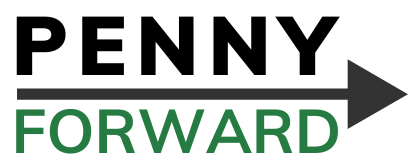Hey there, fellow freelancers and self-employed hustlers! Last time, we delved into the nitty-gritty of why profit, not just revenue, is the real measure of success when you’re working for yourself. We also highlighted how keeping solid records can simplify figuring out your bottom line. Today, we’re taking it a step further and tackling the profit & loss statement.
So, what exactly is it and how do we create one? Well, think of it as your financial report card for your business. It’s like a snapshot of your earnings and expenses over a specific period, usually a month, quarter, or year. This report lays out your revenue, subtracts your costs, and gives you the grand total: your net profit (or loss, if things didn’t quite go as planned). In a very simple case, like the one we describe below, you can easily calculate this yourself using a calculator and the receipts you received when you paid for the hosting and software you needed to run your business. Time flies, though, and it’s easy to lose track of all of the transactions that describe your revenue and expenses. This is where bookkeeping software comes in. It lets you easily and efficiently record and categorize every transaction so it can generate your profit and loss statement for you at the click of a button. We’ll describe this process in a future post, but today, let’s stay focused on one of the results, the profit & loss statement. It breaks down your income, cost of goods sold, gross profit, operating expenses, and net profit. In most cases, your net profit is the most important indicator of how much money you’ve made, but the other numbers show you how you calculated it. Let’s review this example.
Profit and Loss
Analog Archivers
Date Range: 2024-01-01 to 2024-0205
| ACCOUNT NUMBER | ACCOUNTS | Jan 1 to Feb 5, 2024 |
| Income | ||
| Sales | $50.00 | |
| Total Income | $50.00 | |
| Total Cost of Goods Sold | $0.00 | |
| Gross Profit | $50.00 | |
| Operating Expenses | ||
| Computer – Hosting | $317.65 | |
| Computer – Software | $36.00 | |
| Merchant Account Fees | $1.05 | |
| Total Operating Expenses | $354.70 | |
| Net Profit | ($304.70) |
Okay, so what’s going on here? First off, we see the income section, which is just what it sounds like: the money coming in from sales. In this case, Analog Archivers made $50.00.
Next up, we’ve got the cost of goods sold (COGS). Since Analog Archivers is a service-based business that digitizes our customers records and tapes, there are no tangible goods to account for, hence the $0.00 here. If you buy goods to resell, though, this is where you’ll record what you spent.
Then comes the all-important gross profit, which is simply your total income minus the cost of goods sold. Here, it’s $50.00. This is simply your income, $50.00, minus your cost of goods sold, $0.00.
But Before we start counting our profits, we’ve got to deduct our operating expenses—things like hosting fees, software subscriptions, and merchant account fees. Once we subtract those from our gross profit, we’re left with the net profit, which unfortunately, in this case, is a loss of ($304.70). This tells us, and the government agencies we need to report to, that we haven’t made any money yet. This is particularly important if we’re receiving benefits since they’re not supposed to reduce our benefits until we have enough money to replace them.
And there you have it, folks—a crash course in decoding a profit & loss statement!
In conclusion, understanding profit & loss statements is essential for any freelancer or self-employed individual. It’s not just about knowing how much money you’re making; it’s about understanding where that money is coming from and where it’s going and being able to accurately report it. So, here’s to keeping those financial records in tip-top shape and steering our businesses toward profitability!
Catch you next time,
Chris Peterson, AFC®
Founder and CEO, Penny Forward

Leave a Reply